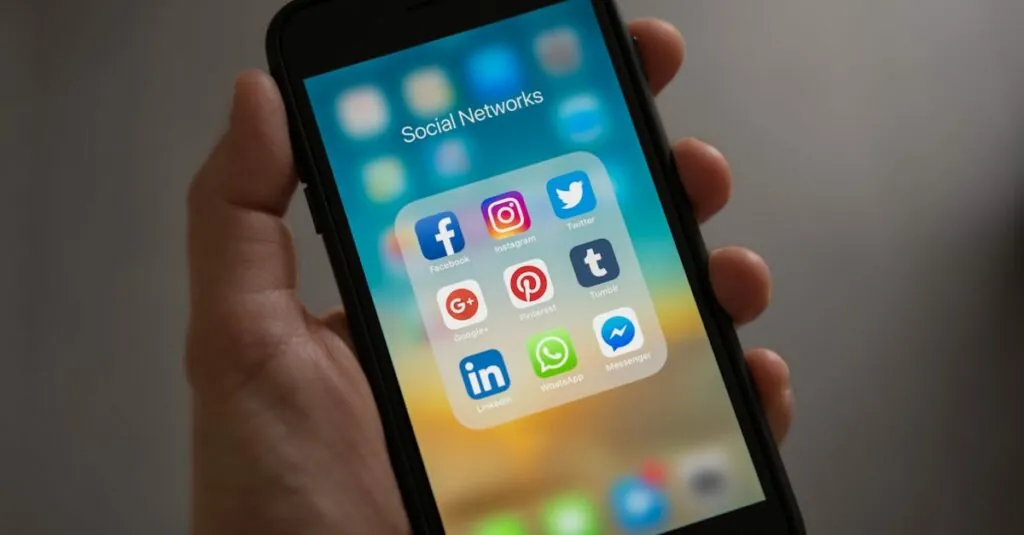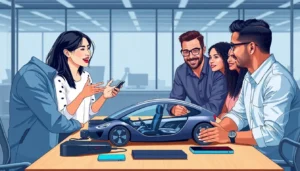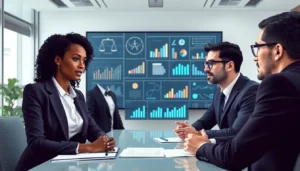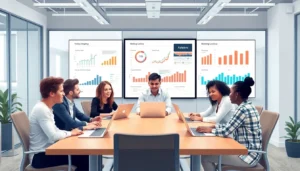Navigating the world of copyright can feel like trying to find a needle in a haystack, especially when working on Google Docs. It’s easy to assume that everything on the internet is free for the taking, but that’s a slippery slope. Knowing how to check for copyright on your documents is not just smart; it’s essential if you want to avoid legal headaches down the road.
Imagine pouring your heart into a project only to discover you’ve unknowingly borrowed someone else’s work. Yikes! Thankfully, checking for copyright isn’t as complicated as it sounds. With a few simple steps, you can ensure your content is as original as your grandma’s secret cookie recipe. Let’s dive into the how-tos and keep your creativity flowing without the worry of copyright infringement.
Table of Contents
ToggleUnderstanding Copyright
Copyright protects original works, including text, images, music, and other creative content. This legal framework grants creators exclusive rights, preventing others from using their work without permission. For anyone using Google Docs, comprehending copyright principles is essential to avoid infringing on someone else’s rights.
Creators automatically own copyright once they fix their ideas into a tangible medium. This means that even unpublished works possess copyright protection, emphasizing that not all online content is free to use. Various types of copyright exist, including full ownership, fair use, and Creative Commons licenses. Familiarity with these terms helps individuals understand what is permissible when using others’ work.
Fair use allows limited use of copyrighted material without permission under specific circumstances, such as criticism, comment, or educational purposes. However, fair use is subjective, and determining its applicability can be complex. It’s wise to seek clarification regarding what constitutes fair use to minimize legal risks.
Creative Commons licenses provide a flexible range of protections for authors while allowing others to use their work under specific conditions. Recognizing the different types of licenses, including attribution, share-alike, and non-commercial, can significantly simplify the process of using online content.
Respecting copyright fosters a culture of creativity and innovation. Individuals can contribute original work while acknowledging the rights of others. Before using any material in Google Docs, checking copyright status becomes a crucial step, ensuring that all content aligns with legal standards.
Importance Of Checking Copyright
Understanding copyright is essential when using Google Docs. Respecting copyright rights helps avoid legal complications and promotes originality.
Legal Implications
Copyright infringement can lead to serious legal consequences. Copyright holders possess exclusive rights to their work, which includes the ability to sue for unauthorized use. In many cases, individuals face hefty fines or legal penalties for infringing on these rights. Courts often determine these cases based on the extent of usage and the nature of the work involved. Those who incorporate copyrighted content without proper permission risk violating the law, underscoring the necessity of thorough copyright checks.
Ethical Considerations
Respecting copyright is fundamental to ethical content creation. Using another person’s work without acknowledgment undermines the creator’s value and hard work. This action can damage professional relationships and diminish trust within communities. Ethical practices encourage collaboration and creativity while ensuring that original authors receive recognition for their contributions. By checking for copyright, individuals foster a culture of respect and responsibility towards intellectual property rights.
How To Check For Copyright On Google Docs
Checking for copyright in Google Docs is essential to maintain originality and avoid legal issues. Users can easily verify copyright status with built-in tools and external searches.
Using Built-In Google Docs Tools
Google Docs provides features to help identify copyright issues. Users can access the ‘Explore’ tool to find cited sources related to their content. This feature suggests articles and images along with proper citations. Utilizing this tool aids in ensuring that content remains original and respects the rights of other creators. Furthermore, users can search for Creative Commons licenses, which indicate whether they can use specific images or text legally. This streamlines the process of finding appropriate resources that align with copyright regulations.
Conducting External Searches
Conducting external searches enhances copyright verification. Using search engines, users can find the original sources of text or images. Performing a reverse image search for visuals can help establish copyright ownership. Users can also check databases like the U.S. Copyright Office for registered works. Exploring platforms, such as Wikimedia Commons, offers access to public domain content or works under Creative Commons licenses. By employing these methods, individuals can ensure that they follow copyright laws while utilizing various materials in their Google Docs.
Common Copyright Issues To Avoid
Misunderstanding the scope of copyright can lead to significant legal and ethical complications. Ignoring copyright notices on images and text often results in unintentional infringement. Using existing works without permission, even with the belief that the work is public domain, poses a risk unless verified. Obtaining proper licenses for Creative Commons materials is crucial, as failure to comply with their specific terms can lead to unauthorized use.
Misapplying fair use guidelines can create ambiguity. Limited reproduction of copyrighted material often requires a nuanced understanding of context and purpose. Consideration of factors such as the amount used and the effect on the market value is vital for fair use claims. Beyond fair use, it’s important to acknowledge that attribution alone doesn’t suffice when utilizing someone else’s intellectual property.
Navigating copyright issues in collaboration presents unique challenges. Failing to clarify ownership in shared documents or creations can lead to disputes later on. Establishing clear agreements about contributions and rights protects everyone’s interests. Additionally, overlooking copyright registration can limit legal recourse in cases of infringement, making it important to register original works.
Importing content from unverified online sources increases the risk of copyright violations. Academic or reputable databases typically provide safer options for research and project material. Relying on tools like citation generators requires diligence to ensure accurate representation of source material. Regularly reviewing updates in copyright law helps in maintaining compliance and awareness of new developments affecting creative works.
Resources For Further Learning
Numerous online resources provide valuable information about copyright. Websites like the U.S. Copyright Office offer comprehensive guides explaining the basics. The Creative Commons website outlines their licenses and how to use them responsibly. Articles from reputable law firms detail fair use and its implications for creators.
Books focused on intellectual property law offer in-depth insights. “Copyright Law for Dummies” explains complex concepts in an accessible manner. “Intellectual Property in the New Technological Age” addresses modern challenges creators face. Many universities conduct workshops on copyright issues, providing practical knowledge.
YouTube channels dedicated to educational content often cover copyright topics. Tutorials can elucidate copyright checks specific to Google Docs. Dedicated content creators discuss real-world applications of copyright law. Podcasts featuring legal experts share experiences and tips on navigating copyright.
Online courses on platforms like Coursera or Udemy group essential copyright topics into structured lessons. These courses enhance understanding of legal frameworks surrounding creativity. Forums and discussion groups, like those on Reddit, connect people facing similar copyright challenges. Engaging with a community helps clarify doubts and share resources.
Legal aid organizations provide free or low-cost consultations for specific copyright questions. Creating a network with fellow creators fosters an understanding of copyright in various fields. Utilizing these resources empowers individuals to navigate copyright effectively while ensuring ethical use of material.
Understanding copyright is essential for anyone using Google Docs. By checking for copyright and using the available tools, individuals can protect themselves from potential legal issues. They can foster creativity while respecting the rights of original creators.
Utilizing resources like the U.S. Copyright Office and Creative Commons can further enhance awareness. Staying informed about copyright laws and best practices will not only ensure compliance but also promote ethical use of creative works. This proactive approach helps maintain professional relationships and supports a culture of respect for intellectual property rights.










